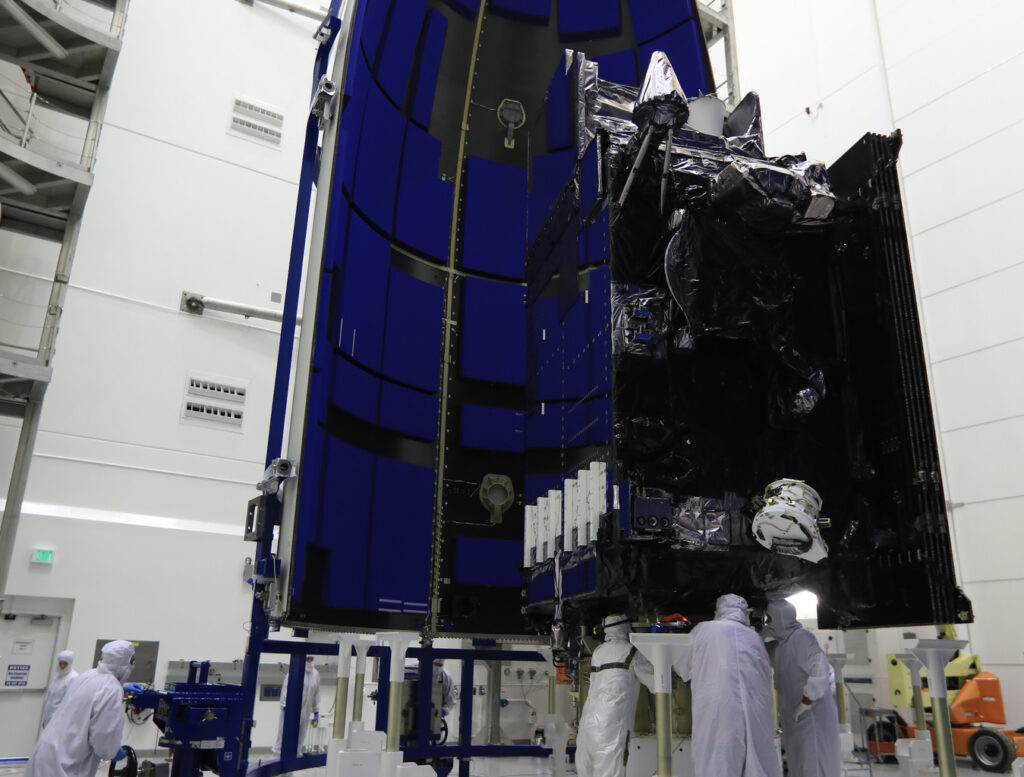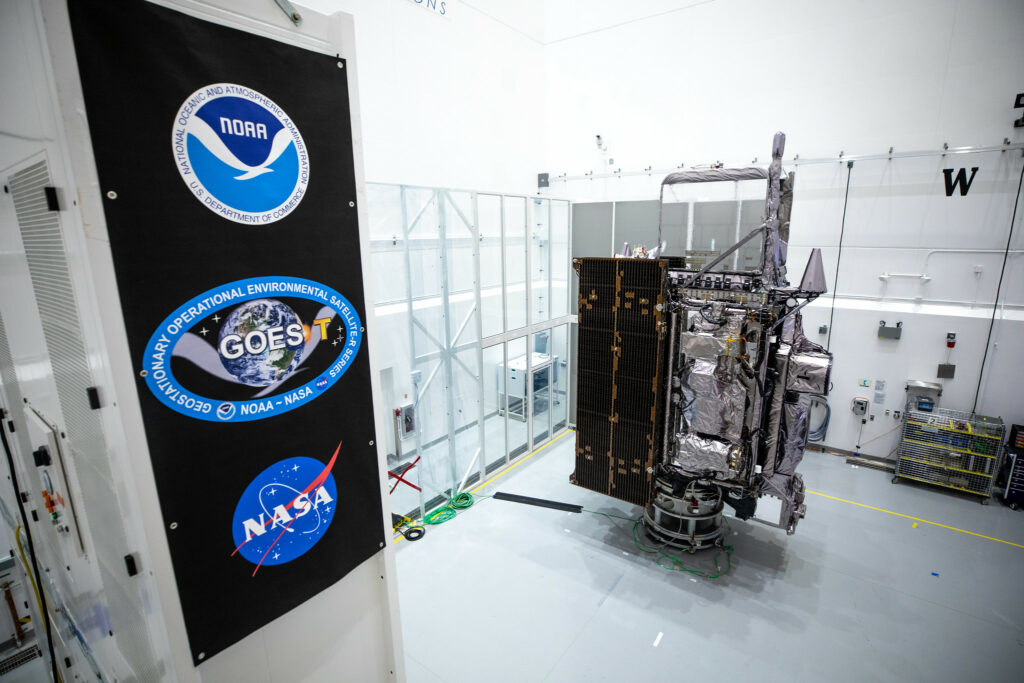
By Jim Cawley
NASA’s Kennedy Space Center
An activity completed at Astrotech’s Space Operations facility in Titusville today brings NOAA’s Geostationary Operational Environmental Satellite T (GOES-T) mission one significant step closer to its March 1, 2022, liftoff from Cape Canaveral Space Force Station in Florida in just over a month.
On Jan. 27, 2022, the spacecraft was lifted and mated to the payload adapter – a piece of hardware that interfaces mechanically between the rocket and the spacecraft. The payload adapter also has the capability built into it to allow the spacecraft to separate from the rocket when it gets on orbit.
“It is the start of integrated operations, which is now the satellite and the rocket are starting to come together,” said GOES-T Mission Manager Rex Engelhardt. “We’ve been doing a lot of analysis, but this is the first piece of rocket hardware that we’re putting together with the satellite.”
Next week, the first stage of the United Launch Alliance (ULA) Atlas V 541 rocket for GOES-T will be erected. ULA also will be cleaning each half of the payload fairing during this timeframe. Upcoming important February activities include encapsulation, where the two pieces of the payload fairing come together to secure the satellite inside, hoist to the transporter, and transport and mate to the launch vehicle. GOES-T is targeted to roll to the launch pad on Feb. 28.
The third satellite in NOAA’s GOES-R series, GOES-T’s launch is managed by NASA’s Launch Services Program based at the agency’s Kennedy Space Center in Florida, America’s multi-user spaceport. The GOES satellite network helps meteorologists observe and predict local weather events that affect public safety, including thunderstorms, tornadoes, fog, hurricanes, flash floods, and other severe weather. GOES-T will provide critical data for the U.S. West Coast, Alaska, Hawaii, Mexico, Central America, and the Pacific Ocean.

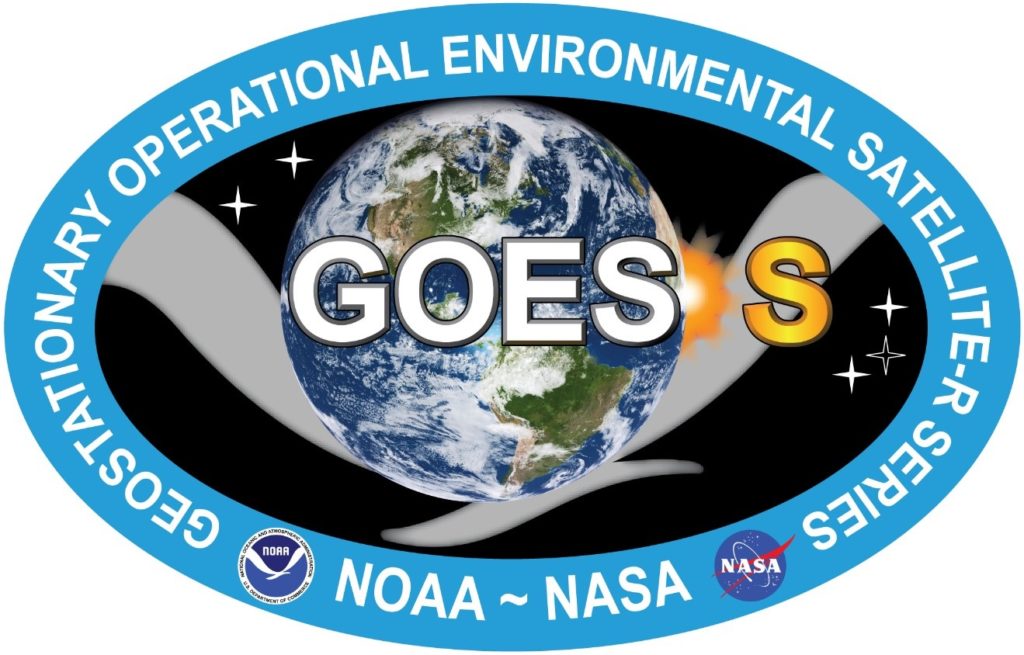 NOAA’s Geostationary Operational Environmental Satellite-S (GOES-S) is the second in the GOES-R Series of weather satellites that includes GOES-R (now named GOES-16), -S, -T and -U. The GOES-S satellite will be renamed GOES-17 when it reaches geostationary orbit. Once the satellite is declared operational, late this year, it will occupy NOAA’s GOES-West position and provide faster, more accurate data for tracking wildfires, tropical cyclones, fog and other storm systems and hazards that threaten the western United States, including Hawaii and Alaska, Mexico, Central America and the Pacific Ocean, all the way to New Zealand.
NOAA’s Geostationary Operational Environmental Satellite-S (GOES-S) is the second in the GOES-R Series of weather satellites that includes GOES-R (now named GOES-16), -S, -T and -U. The GOES-S satellite will be renamed GOES-17 when it reaches geostationary orbit. Once the satellite is declared operational, late this year, it will occupy NOAA’s GOES-West position and provide faster, more accurate data for tracking wildfires, tropical cyclones, fog and other storm systems and hazards that threaten the western United States, including Hawaii and Alaska, Mexico, Central America and the Pacific Ocean, all the way to New Zealand.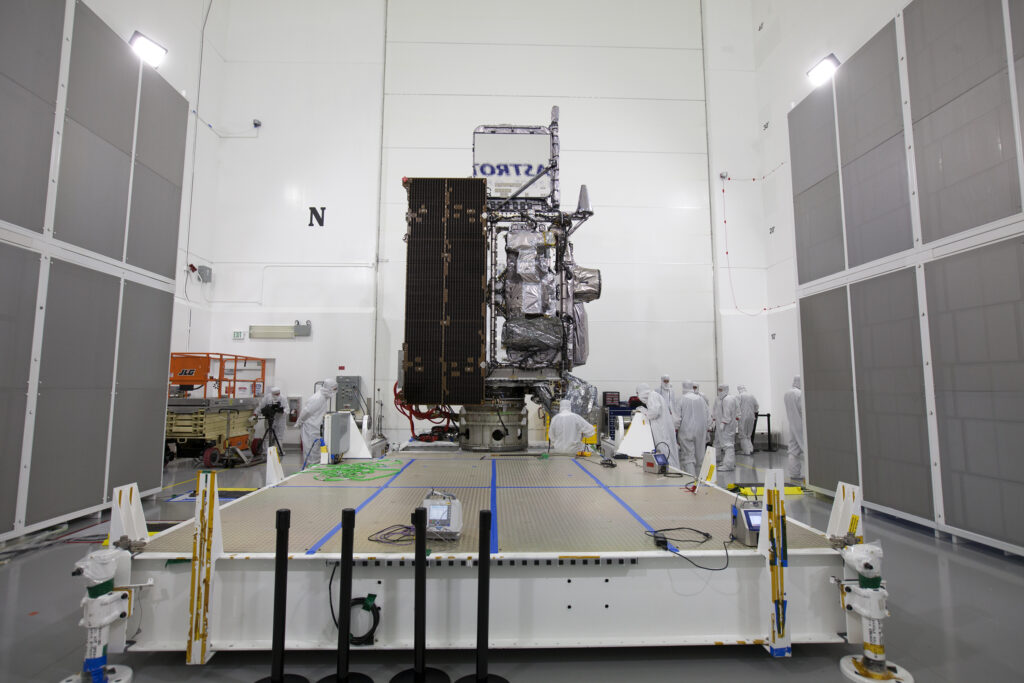 Managers from NASA, NOAA, USAF 45th Space Wing and United Launch Alliance gave a unanimous “go” for launch of the GOES-R spacecraft Saturday at 5:42 p.m. EST on a United Launch Alliance Atlas V rocket. The decision followed this morning’s launch readiness review at Kennedy Space Center in Florida.
Managers from NASA, NOAA, USAF 45th Space Wing and United Launch Alliance gave a unanimous “go” for launch of the GOES-R spacecraft Saturday at 5:42 p.m. EST on a United Launch Alliance Atlas V rocket. The decision followed this morning’s launch readiness review at Kennedy Space Center in Florida.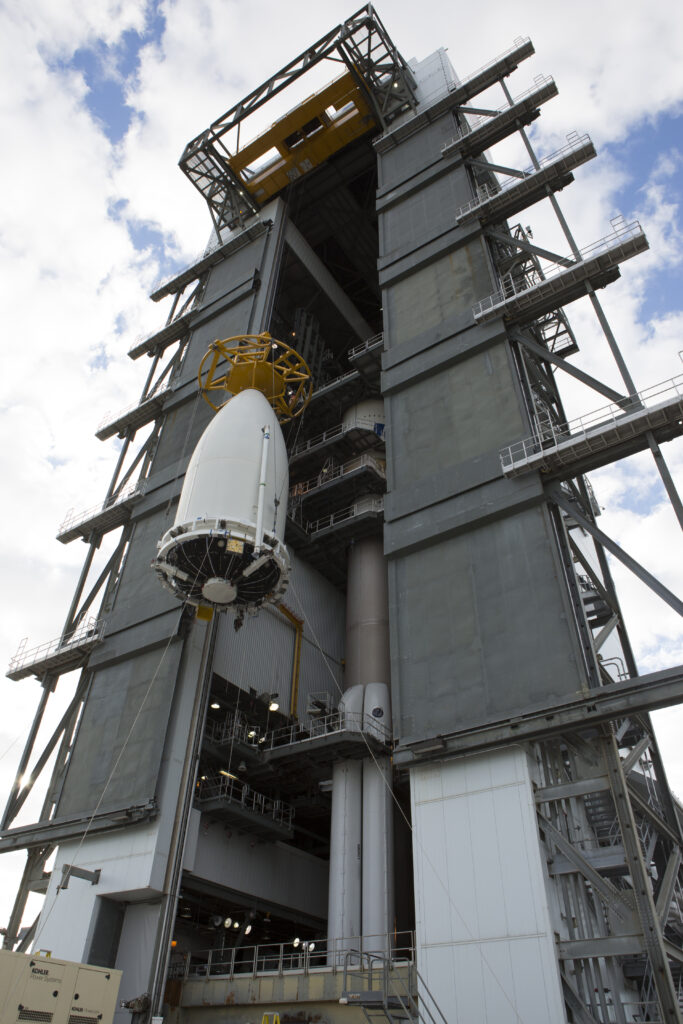 Weather forecasters from the U.S. Air Force 45th Weather Squadron are predicting a 90 percent chance of favorable weather for the one-hour launch window Saturday at Space Launch Complex 41 on Cape Canaveral Air Force Station in Florida for the liftoff of the GOES-R spacecraft atop a United Launch Alliance Atlas V rocket. The spacecraft is seen above in processing as it was lifted to the top of the Atlas V.
Weather forecasters from the U.S. Air Force 45th Weather Squadron are predicting a 90 percent chance of favorable weather for the one-hour launch window Saturday at Space Launch Complex 41 on Cape Canaveral Air Force Station in Florida for the liftoff of the GOES-R spacecraft atop a United Launch Alliance Atlas V rocket. The spacecraft is seen above in processing as it was lifted to the top of the Atlas V.